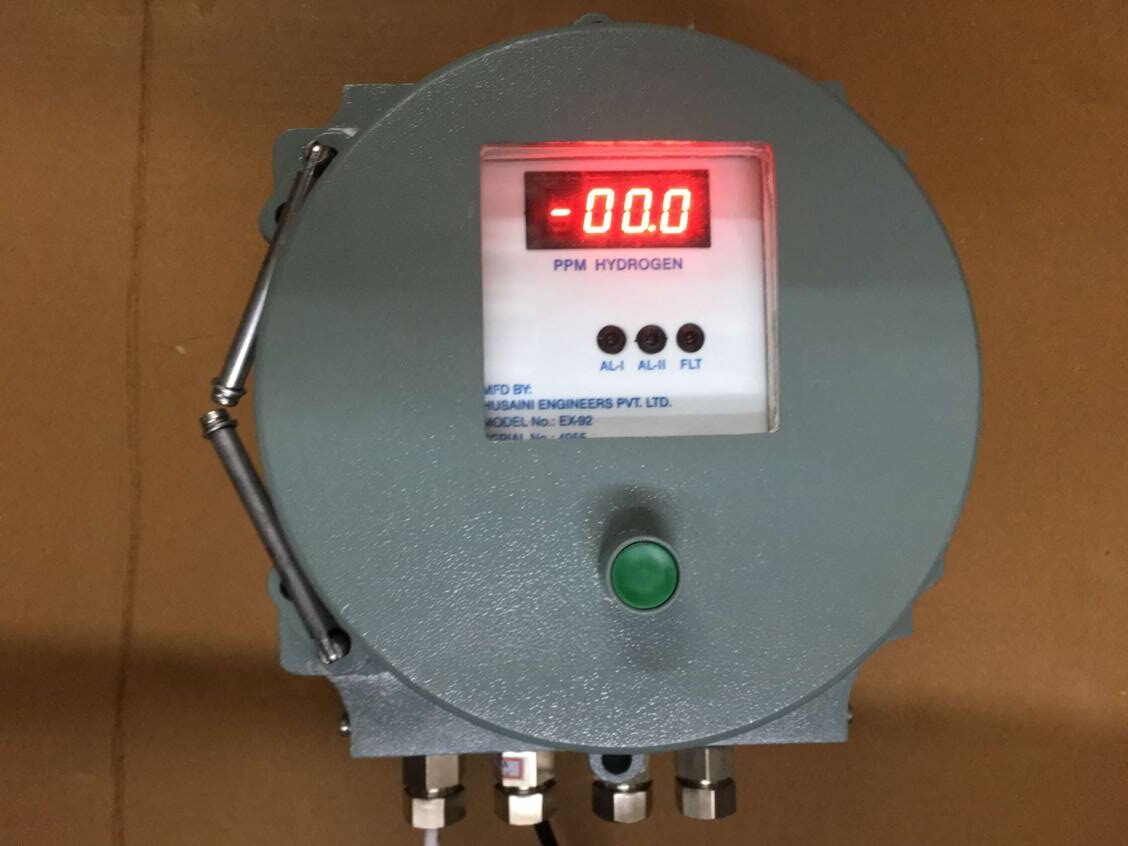Hydrogen Leak Detector

Hydrogen Leak Detector
Hydrogen is widely used across industries, but its properties-high flammability, invisibility, and potential explosive risks-make it essential to detect leaks quickly and accurately. A Hydrogen Gas Leak Detector is a sophisticated instrument designed to identify the presence of hydrogen in the air to prevent safety hazards, ensure operational efficiency, and comply with stringent safety regulations.
Hydrogen Gas Leak Detectors is a specialized device designed by Husaini® to detect and monitor the presence of hydrogen gas leaks in industrial and commercial settings.
Known for its precision and reliability, the detector ensures safety by promptly identifying hydrogen leaks, preventing hazards in environments where hydrogen is stored or utilized.
Why Detecting Hydrogen Leaks is Critical?
Hydrogen gas is colourless, odourless, and highly volatile, with a wide flammability range (4%-75% by volume in air). Even small leaks can pose risks of fire, explosion, or asphyxiation in confined spaces. Early detection through reliable detectors can:
- Minimize accidents and injuries.
- Prevent damage to equipment and facilities.
- Enhance worker safety and confidence.
- Comply with safety standards, such as pollution control board guidelines.
Key Features of the Hydrogen Gas Leak Detector
Advanced Sensing Technology:
- Equipped with semiconductor or solid-state sensors for accurate detection of hydrogen concentrations.
- Real-time measurements ensure continuous monitoring.
Analog and Digital Output Options:
- 4-20 mA Analog Output: Seamlessly integrates with SCADA/PLC/DCS systems for centralized monitoring.
- MODBUS RS485 Communication: Enables remote data logging and integration with digital platforms for enhanced visibility.
Dual Alarm Functionality:
- Two independent potential-free alarm contacts allow users to configure ALARM-I and ALARM-II thresholds based on site-specific requirements.
- Hysteresis capability prevents false alarms and reduces relay wear.
Versatile Installation Options:
- Available in wall-mounted, panel-mounted, portable, or weatherproof or Flameproof enclosures for a range of industrial applications.
- A compact and robust design ensures durability in harsh environments.
Ease of Use and Maintenance:
- Localized display with intuitive navigation simplifies setup and operation.
- User-selectable input ranges and calibration processes allow field adjustments without the need for specialized tools.
- Minimal maintenance ensures longevity, with a sensor life expectancy of 5-7 years under proper handling.
Automation and Remote Actuation:
- Capable of triggering external systems such as ventilation fans, shut-off valves, or alarms automatically upon detecting a leak.
- Optional industrial hooter and flasher available for visual and audible alerts.
Benefits of Using the Hydrogen Gas Leak Detector
- Real-Time Monitoring: Continuous detection ensures instant alerts to minimize risks.
- Enhanced Accuracy: Advanced microprocessor technology reduces errors and provides stable readings.
- Customizable Options: Configurable alarm thresholds and communication systems cater to diverse industrial needs.
- Cost-Effective Operation: Reduces potential losses by preventing accidents and downtime.
Application
- Industrial Hydrogen Plants: Detection of leaks in hydrogen generation, storage, and transportation systems. Ensures compliance with safety protocols in hydrogen electrolyzers and fuel cells.
- Chemical and Petrochemical Industries: Monitors hydrogen use in refining, ammonia production, and other processes requiring controlled environments.
- Power Generation: Detects hydrogen leaks in cooling systems for generators in thermal and nuclear power plants.
- Research and Development Facilities: Provides safety in laboratories and testing facilities working with hydrogen-based technologies.
- Aerospace and Automotive Sectors: Essential for hydrogen-powered fuel cell vehicles and rocket propulsion systems.

